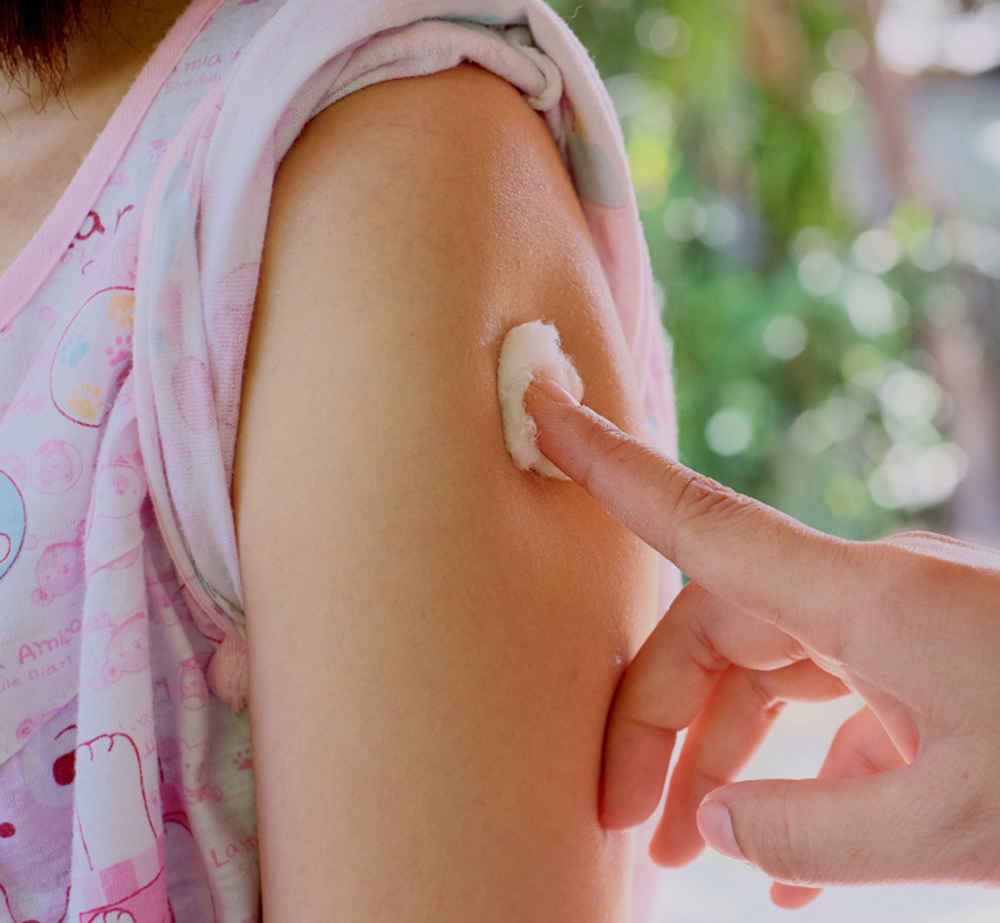410-721-2273
Poison Ivy, Poison Oak, and Poison Sumac
What are poison ivy, poison oak, and poison sumac?
Poison ivy, poison oak, and poison sumac are plants that are found throughout North America. Leaves, stems, roots and berries of all of these plants cause the same type of skin rash. More than 50% of people are sensitive to the oil of these plants.
The rash is extremely itchy and can have streaks or patches of redness and blisters on exposed body surfaces (such as the hands). The rash appears 1 or 2 days after your child has been exposed to the plant in a forest or field.
How long does it last?
How can I take care of my child?
Wash the area
If you think your child has had contact with one of these plants, wash the exposed areas of skin with any available soap for 5 minutes. Take special care to clean under the fingernails. Do this as soon as possible because after 1 hour it is too late to prevent the oil from absorbing into the skin.
Wash contaminated clothing separately several times before your child wears it again. This makes sure that all traces of oil are removed.
Cool soaks
Soak the area with the rash in cold water or massage it with an ice cube for 20 minutes as often as necessary. Let it air dry after the soaking or massage. This will reduce itching and oozing.
Steroid creams
If applied early, a steroid cream can reduce the itching. Your pharmacist can recommend a nonprescription 1% hydrocortisone cream. If it doesn't get better, your child's provider may recommend a stronger prescription steroid cream. The sores should be dried up and no longer itchy in 10 to 14 days. In the meantime, cut your child's fingernails short and encourage him not to scratch himself.
Oral steroids
Severe or widespread poison ivy may require oral steroids to bring it under control. Call your child's pediatrician if the blisters don't improve.
Benadryl
If itching persists, give over-the-counter liquid (oral) Benadryl every six hours.
Contagiousness
The fluid from the sores themselves cannot cause a rash. However, oil or sap from the poisonous plant may remain on a pet's fur or on clothes or shoes. This oil or sap can cause a rash for about a week. Be sure to wash it off clothes or pets with soap and water.
How can I help prevent the rash?
- Learn to recognize these plants. Poison ivy grows in all regions of North America. Poison oak grows in western North America and the southeastern region of the U.S. To be safe, avoid all plants with three large green leaves on each stem. Another clue is shiny black spots on damaged leaves. (The plant sap turns black when exposed to air.)
Poison sumac has 7 to 13 leaves per stem, grows in swamps in the southeast U.S., and is harder to recognize. - Everyone should wear long pants or socks when walking through woods that may contain poison ivy, oak, or sumac. You may want to use a barrier skin cream such as IvyBlock, which is specifically made for this purpose.
Call 911
Call us within 24 hours if:
- The fever lasts over 48 hours after your child starts taking the antibiotic.
- The cough lasts over 3 weeks.
- You have other questions or concerns.
Written by B.D. Schmitt, MD, author of "Your Child's Health," Bantam Books.
This content is reviewed periodically and is subject to change as new health information becomes available. The information is intended to inform and educate and is not a replacement for medical evaluation, advice, diagnosis or treatment by a healthcare professional.
You May Also Like
Popular Resources | Make an Appointment • Locations • Refill Prescriptions





